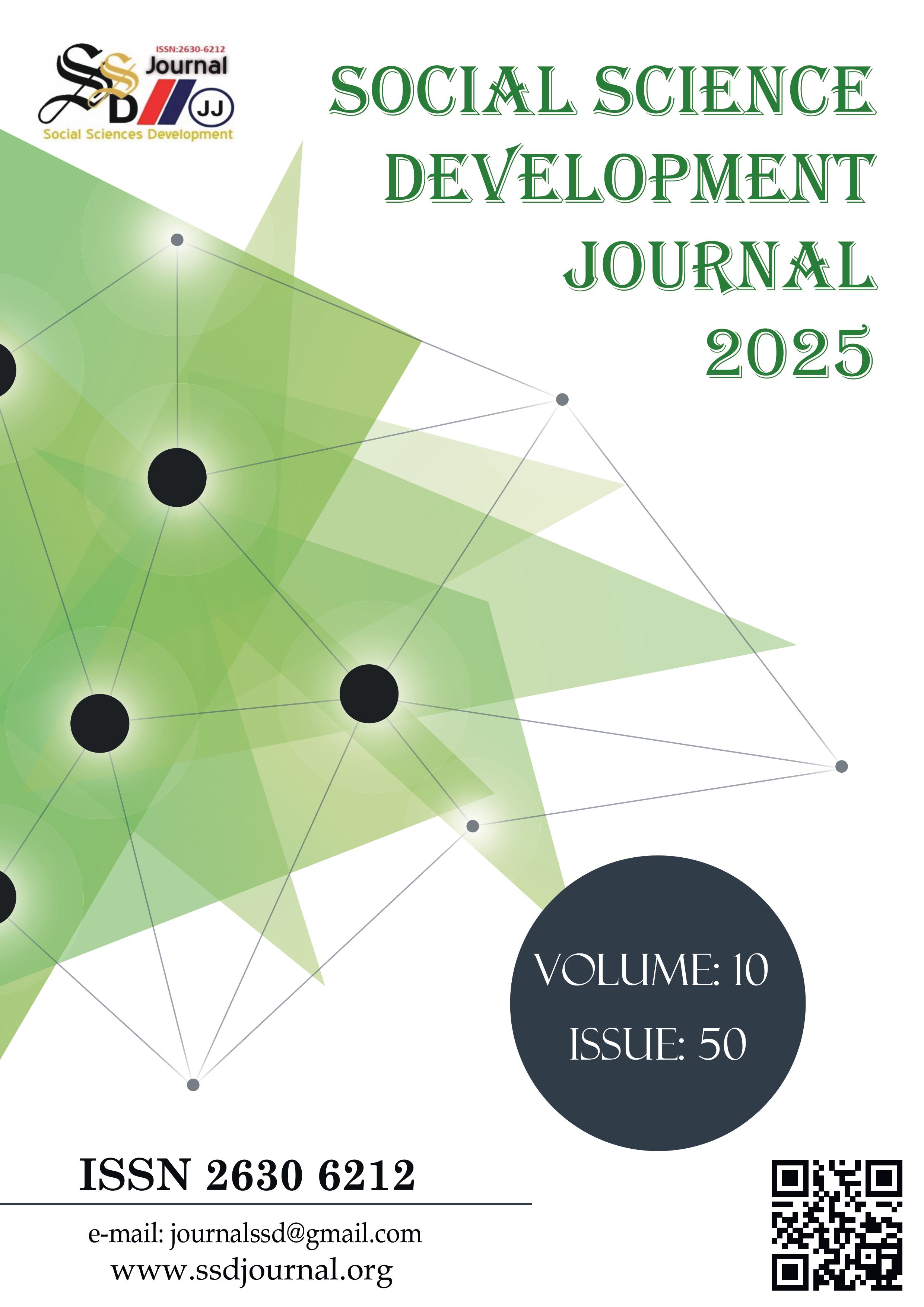FROM ARCHAEOLOGY TO ARCHIVES: DOCUMENT-BASED RECONSTRUCTION OF CULTURAL HERITAGE IN THE CASE OF BALIKESIR
DOI:
https://doi.org/10.5281/zenodo.15401432Keywords:
Cultural Heritage , Information and Records Management, Settlement Dynamics, History of Balıkesir, Collective MemoryAbstract
This study examines the multi-layered cultural structure of Balıkesir through the lens of information and records management, discussing the document-based reconstruction of cultural heritage by analyzing archaeological findings, historical documents, and traces of spatial memory. From ancient cities to Ottoman-era probate records, from sites associated with the Armenian community to architectural transformations of the Republican period, the analysis encompasses a wide variety of sources and demonstrates that cultural continuity is not solely a physical phenomenon but also a document-based process. Arguing for the digitization, classification, and public accessibility of archaeological and historical data, the study establishes a holistic connection between local history and the discipline of information and records management. In this regard, the research proposes a strategic model for the preservation of local memory and offers a meaningful contribution to interdisciplinary studies of cultural heritage. Through its extensive use of diverse sources ranging from ancient settlements to Ottoman probate documents and beyond, the study underscores that cultural continuity relies as much on documentation as on physical traces. By advocating for the systematic digitization and dissemination of such data, it builds a conceptual and practical bridge between heritage studies and the field of information science.is study examines the multi-layered cultural structure of Balıkesir from the perspective of information and records management, discussing the document-based reconstruction of cultural heritage through archaeological findings, historical documents, and traces of spatial memory. Spanning a wide range of sources—from ancient cities to Ottoman-era probate records, from sites associated with the Armenian community to structural transformations of the Republican period—the analysis reveals that cultural continuity is not merely a physical phenomenon but also a documentary process. The study argues that archaeological and historical data should be digitized, systematically classified, and made publicly accessible, thereby establishing an integrated link between local history and the discipline of information and records management. In this respect, the research proposes a strategic model for preserving local memory and contributes significantly to interdisciplinary studies of cultural heritage.
References
Başlık, S., & Akbulut, M. R. (2020). Adramytteion Antik Kenti Bütüncül Koruma Planı. Planlama, 30(2), 221–241. https://doi.org/10.14744/planlama.2020.74046
Botkin, D. R., Weeks, M. N., & Morris, J. E. (2000). Changing marriage role expectations: 1961–1996. Sex Roles, 42(9-10), 933-942.
Elmas, E. (2025). Balıkesir’de Yapıları Günümüze Ulaşamayan Kitâbeler. Erciyes Akademi, 39(1), 32–53. https://doi.org/10.48070/erciyesakademi.1565155
Er, İ. (2008). Balıkesir Tereke Kayıtları Üzerinde Bir Değerlendirme (1670–1700). (Yüksek Lisans Tezi). Balıkesir Üniversitesi, Sosyal Bilimler Enstitüsü.
Er, İ., & Genç, S. (2008). XVII. Yüzyıl Sonlarında Balıkesir’de Giyim Kuşam. Balıkesir Üniversitesi Sosyal Bilimler Enstitüsü Dergisi, 11(19), 107–115.
Erdem, A., Togul, E., Karabulut, E., & Erdem, Z. (2023). Kültürel Mirasın Yaşatılmasında Tarihi Mekânların Hazine Avı Etkinliği ile Öğretilmesi: Balıkesir Örneği. Uluslararası Sosyal Araştırmalar ve Davranış Bilimleri Dergisi, 9(2), 225–234.
Güler, T., Şahnagil, S., & Güler, H. (2016). Kent Kimliğinin Oluşturulmasında Kültürel Unsurların Önemi: Balıkesir Üzerine Bir İnceleme. Paradoks Ekonomi, Sosyoloji ve Politika Dergisi, 12(Özel Sayı), 85–104.
İren, F., & Kasar, G. (2024). Daskyleion’da Kültürel Bilginin Arkeolojik İzleri: Çok Katmanlı Bellek Alanları. Anadolu Kültürel Bellek Çalışmaları Dergisi, 2(1), 145–159.
Öntuğ, M. M. (2003). XVII. Yüzyılın İlk Yarısında Balıkesir Şehrinin Fizikî, Demografik ve Sosyo-Ekonomik Yapısı. (Doktora Tezi). Selçuk Üniversitesi, Sosyal Bilimler Enstitüsü.
Öntuğ, M. M. (2012). Balıkesir’deki Ermeni Kilisesi ve Mektep Açma Faaliyetleri. OTAM (Ankara Üniversitesi Osmanlı Tarihi Araştırma ve Uygulama Merkezi Dergisi), (31), 343–359. https://doi.org/10.1501/OTAM_0000000376
Polat, E. (2023). Kral Yolu’nun Anadolu Güzergâhı. Erdem, 85, 91–118. https://doi.org/10.32704/erdem.2023.85.091
Şahin, R. (2020). Adramytteion’un Geç Antik Çağ Kırmızı Astarlı Keramikleri: Tespitler ve Bölgeler Arası Bir Değerlendirme. Anadolu Araştırmaları, 23, 215–259. https://doi.org/10.26650/anar.2020.23.829148
Ulusoy Yıldırım, H., Kılıç, S. N., & Avcıkurt, C. (2020). Antandros Antik Kenti’nin Kültür Turizmine Kazandırılması: Nitel Bir Araştırma. Türk Turizm Araştırmaları Dergisi, 4(3), 1689–1706.
Ünal, C. (2015). Balıkesir, Kuva-yi Milliye Müzesi’nden II. Nikephoros Phokas (963–969) Dönemine Ait Nadir Gümüş Sikke Miliaresion. Sanat Tarihi Dergisi, 24(1), 107–120.
Uzun, A., & Gül, M. F. (2019). Tarihi Coğrafya Perspektifinden Balıkesir Vilayeti Coğrafyası. Balıkesir Üniversitesi Sosyal Bilimler Enstitüsü Dergisi, 22(42), 1–16.
Downloads
Published
How to Cite
Issue
Section
License
Copyright (c) 2025 Okan KOÇ, Umut GÜNEŞ

This work is licensed under a Creative Commons Attribution 4.0 International License.



